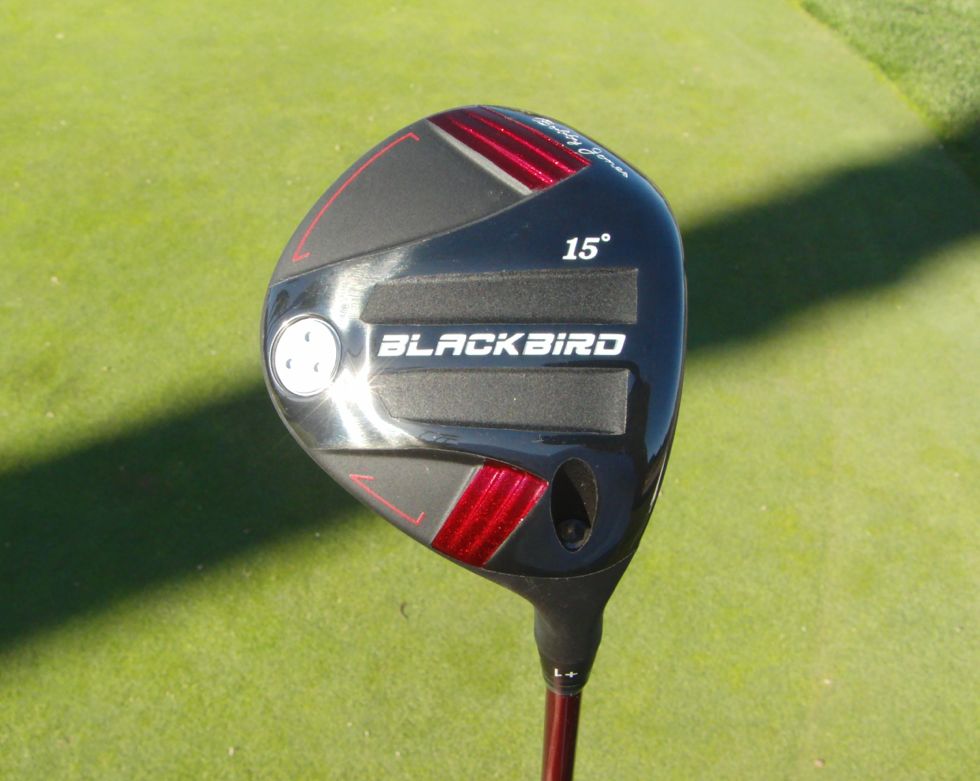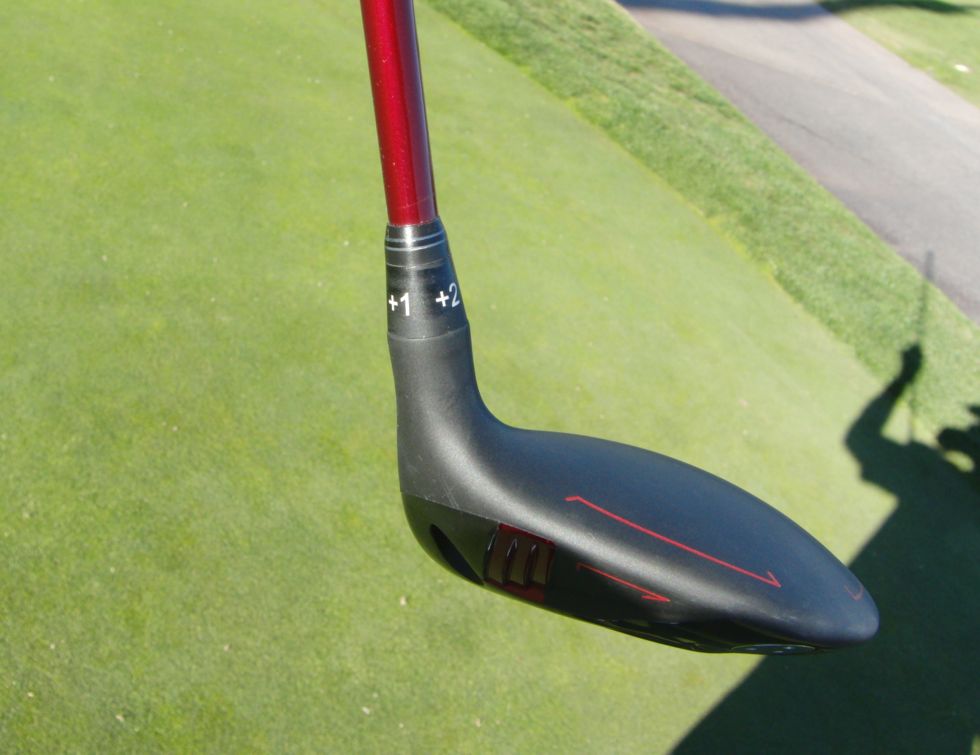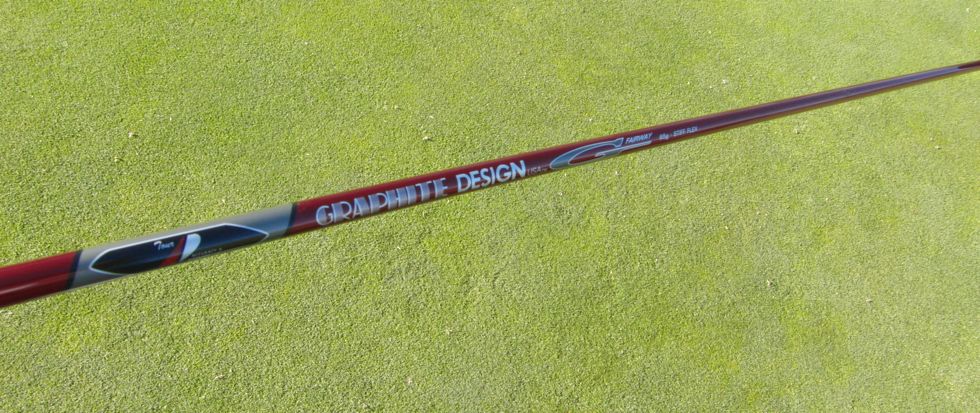 I learned the game of golf on a pair of cut down clubs: a Mizuno pitching wedge and an Orlimar 3-wood, so both brands have always had a place in my heart.
I learned the game of golf on a pair of cut down clubs: a Mizuno pitching wedge and an Orlimar 3-wood, so both brands have always had a place in my heart.
Orlimar, a fairway metal giant back in the 1990s, has fallen off the map after head designer, and the driving force behind the company’s greatness, Jesse Ortiz left in 2003. Ortiz has long been one of the game’s most recognizable club designers, dating back to the days of permission woods. Though maybe not the best businessman, Ortiz had proven himself to be among the most innovative club designers in golf since joining Bobby Jones Golf a little less than a decade ago.
Ortiz and the higher-ups at Bobby Jones Golf have purposely limited the company’s scope to avoid stretching it thin, focusing on drivers, fairway woods, and hybrids. Bobby Jones, with input from Dave Pelz, also formerly sold wedges with a firm, wear-resistant face backed by a polymer membrane, but those are no longer being made. A short-lived lineup of irons has met the same fate.
If you’re going to review a Jesse Ortiz club though, it’s got to be a fairway metal. Let’s get into it.
Design and Technology
If Jesse Ortiz’s main contributions to the fairway wood design business can be summed up in a few phrases, they’re “sole design,” “weight distribution,” and “exotic materials.” Those aren’t foreign concepts here in 2014, but when Ortiz was making his name, they were weak spots of most fairway metals.
Increasingly, fairway woods have increasingly become extensions of the average golfer’s driver. As driver shafts (and, indeed, fairway wood shafts) have gotten longer and longer, drivers have gotten tougher to hit. We’ve seen several companies make mini-drivers and 3+-woods in an effort to give golfers better options off the tee. Fairway woods have also increasingly become more focused on replacing drivers in the hands of golfers who just can’t keep the big dog in the fairway, which has made them too tougher to hit from the turf.
Ortiz and Bobby Jones Golf are not blind to this. They realize that the average golfer needs their 3-wood to be forgiving off the tee, but if you’ve ever seen an Ortiz-designed wood, you know he is not going to compromise on playability.
While many modern fairway woods have relatively square soles, Bobby Jones’ are much more rounded. This limits turf interaction, and should make the club a bit easier to hit from difficult lies. There are two very shallow cut-outs (“runners,” as Ortiz calls them) in the sole that run perpendicular to the face. Ortiz says these reduce drag and improve playability.
The shape of the club is classic Ortiz. It’s not circular, square, or triangular. It’s very nearly pear-shaped, but with a noticeable bulge that juts out past the toe of the club.
The back of the sole has a weight screw made of either aluminum or tungsten to allow for swing weight changes necessitated by changing the shaft length. The head is particularly low-spinning.
The face is a CH-1 maraging steel, a staple of Bobby Jones and Orlimar fairway metals, that Ortiz says brings the characteristic time (a measure of trampoline effect similar to coefficient of restitution) nearer to that of drivers. The face is thinner at the edges and thicker towards the sweet spot, in an effort to attain high ball speeds across the entire face.
Though many smaller clubmakers have been slow to incorporate adjustable hosels, Bobby Jones Golf has, thankfully, included one. It’s not as sophisticated as those found on Titleist or Nike woods, but if all you want to do is aim the face left, it does the job. It has just three settings: neutral, one degree left, and two degrees left.
Esthetics
The crown is a sinister-looking matte black that actually does a very good job (better than the matte white and shiny black-green color of prior Bobby Jones woods) of masking the goofy shape. The heel and toe sides of the back of the crown have thin red lines that nicely frame the ball, and because they don’t extend all the way to the toe, they too do a good job of making the club shape look more normal.
There’s a tiny red alignment aid – a circle with a line through it – on the crown in line with the center of the face. At address, it just looks like a red blob, which is fine. (It’s also possible I need my eyes checked.)
The black and red color scheme continues to the sole, which also looks great.
Between the two runners is the word “BLACKBIRD,” which looks cool, though, strangely, I can’t find any mention of its meaning on Bobby Jones’ website. The name of the club is presented as either just “Bobby Jones Fairway Woods by Jesse Ortiz” or “Bobby Jones Black Fairway Woods.” In fact, pictures of the club on the site’s website appear to be of prototypes, since the word “BLACKBIRD” is replaced by “BLACK,” and actually appears in slightly different places in different pictures.
The red Graphite Design shaft continues the classy look perfectly.
It doesn’t have all the esthetic bells and whistles of, say, the TaylorMade SLDR S, but I definitely don’t miss the cluttered look of most fairway woods.
Performance
The very first thing I noticed upon pulling off the headcover and taking a whack was the lightness. I didn’t expect it to be so light – most niche-brand clubs simply aren’t, and I expected the small clubhead to be relatively dense.
I was wrong. The clubhead weighs just 214g, and with a shaft that comes in at 65g, that yields a swing weight between D1 and D2. In contrast, the TaylorMade JetSpeed 3-wood that I reviewed earlier this year clocks in at D5. That’s a pretty substantial difference, and you notice is immediately.
The clubhead’s lightness is matched by the shaft’s relative lightness, which at least makes the club feel a bit cohesive. That said, I had a tendency to lose feeling for the clubhead near the top of my backswing. Your results may vary (I have a driver swing speed above 100 and a relatively quick transition), but I’m not sure that Bobby Jones has struck the right balance here. The diminutive size of these fairway woods suggests that better players should gravitate towards them, but anyone with a high swing speed is likely to have the same issues I did.
The other thing I noticed right off the bat was just how truly small this clubhead is. Coming from the JetSpeed, which may as well be an aircraft carrier compared to the Bobby Jones wood, there was a bit of a adjustment period. Heel and toe misses are not really a problem of mine when it comes to fairway woods, but such a shallow club punishes fat shots more than I was used to. Maybe that’s not wholly a terrible thing – if it helps me train myself to not hit fat shots, that would be great – but it led to a few wicked pop-ups that I might have gotten away with had I been using the JetSpeed.
I’ve been playing frequently this summer at a course that requires a lot of 3-woods off the tee. A soft fade on the third hole; a baby draw on four; high fades on 13 and 15; and anything somewhat straight on 16. Most of these shots have angled fairways that shrink where I’d land a driver, or trouble that I need a little extra height to carry, otherwise I’d be hitting the big stick. Point is, if I’m going to play well at that course, I need my 3-wood to be consistent.
When I put the Bobby Jones fairway wood in my bag for the first time, I knew it was going to be a little tricky. These fairways woods are designed to pick the ball, or to sweep it out of the rough, not to launch tee balls with a baby fade.
I got to the third hole: perfect tee shot. The fourth: pulled a little, but right in the fairway. 13th: launched it over the trees. 15: pull fade right down the middle. I asked it to do something it’s not entirely designed to do, and it performed admirably.
The height this thing launches the ball is its biggest strength. Not only how high it launches the ball, but how easy it was to get it up in the air. I found it very easy to hit big sweeping cuts and reserved high draws, making it plenty easy to land the ball soft on a green.
Distance was pretty solid. A few yards shorter than the JetSpeed, but I can live with that. The JetSpeed practically sells out to squeeze every last ounce of distance from a 3-wood, which I don’t necessarily need. It’s still a club that has to fill a yardage gap, and it does that nicely.
It also performs admirably out of the rough, where the ample toe and heel relief really lets the ball cut through even tall rough. I’m still not not hugely likely to be hitting 3-wood out of a bad lie, but with the Bobby Jones fairway woods that’s certainly an option if I need it to be.
The adjustable hosel works just fine. It’s not fancy, but it’s fast, and it gets the job done.
When I hit the driving range during testing, though, some of the club’s weak spots showed up. The face is very small, and there’s no getting around that. If you miss the middle of the face the forgiveness is fine, but I can see how a high-handicapper would find it pretty tough to hit consistently. This club isn’t going to replace anyone’s driver, that’s for sure, but I’m not sure it’s trying to.
Where the lightness came into play was when I wasn’t swinging it well. I’d lose feel for the club near the top of my backswing, and if my sequencing was off, I couldn’t recover. It was just too light. That’s not something that happens to me with the JetSpeed, or any other 3-wood.
I don’t know how else to say it: this 3-wood was too light.
Not too light to be useful (because it was), or too light to be a good value (because it is), or too light to make my golf bag (because it might), but too light for me to really love.
Specifications
The headcover is more of the black and red, and looks like a combination between a boxing glove and a mitten. My problem here is similar to the issue I had when I reviewed the Adams Super S woods last year. The wide opening doesn’t fit into the club divider on my golf bag, so the headcover doesn’t sit as snug as it should when it’s in my bag. It’s already fallen off a few times. They’ve gone for form over function here, which is a shame.
On the plus side, it’s extremely easy to get on and off. That said, I won’t be putting it on and taking it off for long if it’s sitting in the middle of the second fairway every time I play a round.
The grip is a Winn Dri-Tac, which I’m pretty sure has been a mainstay on Bobby Jones fairway woods for a while. I’d never really used a Winn grip before, so it was an interesting experience. I have very sweaty hands (I tend to swap out four gloves over 18 holes, and that’s even with taking them off between shots, not using them while putting and chipping, etc.), so the Dri-Tac, despite it’s “non-slip” promise, didn’t really work for me. I use a midsize grip, so I was going to swap it out anyway, but I’m glad I got to try out a Winn grip, and I’m glad that Ortiz decided to use them as the stock option. Most stock grips are afterthoughts, cheap Tour Velvet or Crossline adaptations, so I appreciate the thought that went into these.
The shaft that comes stock is a 65-gram Graphite Deisgn G-Series model. The way the weight of the shaft matches the head weight is absolutely perfect, striking a great balance between lightness and being able to feel the clubhead.
The fairway woods come in 15- and 17-degree loft options, and senior, regular, and stiff flexes.
They retail for $219, which is a bargain. Oftentimes, niche clubmakers will charge more than the big OEMs (economies of scale, etc.), and usually with fewer features. That’s not the case here. $219 is a highly competitive price point for an adjustable-hosel fairway wood.
Conclusion
I like these fairway woods, and I believe they fit a certain niche. It’s a fairway woods for someone who hits a lot of fairway wood approach shots. They’re great if you need to hit the ball a bit higher but don’t want a giant clubhead that is going to be cumbersome.
There are downsides and tradeoffs, no doubt about it. It’s an extremely light clubhead, something that higher-handicappers might appreciate, but they probably won’t love the smaller clubface. Lower-handicappers should love their versatility, but the weight is going to be an issue.
I’m not sure they’re quite perfect for anyone, but they’re pretty darn good for just about everyone, and they’re an excellent value.






I know what you mean about the “boxing glove” headcover not quite staying on. And, I’m surprised the Adams /super S FWs had trouble with this.
The Adams Idea sets for women come with these superb “coffee can” headcovers for the FWs. A cylindrical top, with a snug but very pliable sock tail. These go on an off with little hassle, AND they stay on.
The hybrid covers are a bit more trouble, but my wife just puts them in her bag during the round, and puts them back on afterward.
I have the Adams Tight Lies 2013 clubs and head covers. I also have the Bobby Jones clubs and head covers. The Bobby Jones covers do taper to wrap better around the club before flaring again. The Adams covers have no taper.
214 grams is not light for a 3W clubhead’s weight.
If one purchases a 3W component clubhead from almost any manufacturer, they are generally around 208 grams nowadays.
Perhaps the shaft used is of the counterweighted variety, with a slightly higher degree of weight towards the butt end, designed to allow for heavier clubheads or longer lengths.
Since TaylorMade typically uses longer lengths, it may be that the Jetspeed you are used to is of a longer length than the Bobby Jones, thereby giving it a heavier swingweight of D5.
I love my “BLACK BIURD- BOBBY JONES”
I got “ 18, 21, 25, 30 and 35 degree”
I am looking for “15 degree” I found one on searching but I can’t order it.
Please help me to get one, it means a lot for my golf.
I’m looking to purchase a 25 degree stiff shaft hybrid. I’ve had the 30 degree Blackbird for several years and it has always been a favorite. It’s playability is simply outstanding from the rough and fairway, out of the sand and off the tee. I’m now 66 and have lost some distance and I’m looking for a club to get me that 185-200 yard carry, with a soft landing able to hold greens. I presently hit the 30 degree approximately 160-175 pending weather conditions. I realize I’m asking a lot and may need a lower loft to obtain the distance I’m looking to achieve. Any idea’s? Looking forward to hearing from you. Thanks, Brian.
I have the Bobby Jones Player series 17 degree. Love it 15 years old still my favorite.